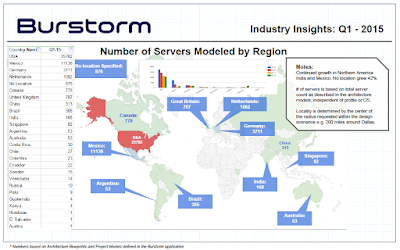Twitter Feed
Stateless Computing
A few days ago I read a review of Merrill Lynch’s Jeffrey Birnbaum LinuxWorld keynote on stateless computing. “With stateless computing, users’ settings and data are automatically saved to the…
Cloud Services
38% of 456 business technology professionals in a Information Week survey indicated that they currently use or will consider using services from a cloud provider. This seems much betterthan the…
Amazon, Elastra and the New Enterprise Data Center
Last week Amazon made an investment into Elastra. Some see this as Amazon’s enterprise play. Others see it as move towards the viability of private clouds. I see it as…
Microsoft Midori
Last week word got out that Microsoft’s new research project codenamed Midori. According to Information Week “the Midori system is being called Microsoft’s first cloud-based OS, and it could one…
Dell Trademarking Cloud Computing
There has been quite a bit of chatter lately over Dell’s attempt to patent “cloud computing”. Last week, the US Patent and Trade Office put an end to those aspirations…
Rob Enderle Cautions on Cloud Computing
Words of caution from Rob Enderle in “The Real Truth and Technology and IT”: “The key to success in the cloud will be keeping solutions simple, plus understanding and mitigating…
3 Important Point for Federal Government Cloud Computing
Point 1: In May, Verizon and AT&T were awarded a DHS task order for just under $1B to provide telecommunications services to the department. Verizon won the lead provider’s spot…
A Cloud Methodology
Although this was published in June, I just saw it and felt it was to good not to repeat: A Methodology for Cloud Computing Architecture Peel off the applications individually,…
IBM Invests Nearly $400M on Cloud Computing Centers
In a press release last week, IBM says that it will spend $360 million to build its most sophisticated, state-of-the-art data center at its facility in Research Triangle Park (RTP),…
Cloud Computing and the NCOIC
According to their website, The Network Centric Operations Industry Consortium (NCOIC) has scheduled a session on cloud computing at their upcoming plenary session in September. In case you haven’t heard…
as the linking of physical components and boxes together in way that addresses the organization’s needs. With this mindset, they focus on specific technical characteristics and capabilities. While these aspects still remain crucial to a successful deployment, the cloud solution architect must instead, visualize solutions as the linking together of compatible and interoperable services. With this viewpoint, the actual physical components are less of a concern and the service levels and service “-ilities” (maintainability, usability, portability, sustainability, etc.) rise in importance. They also must quantify the business economics of any delivered design. Many times economic aspects alone will define the difference between a new service launch and a new idea left on the shelf.
 |
|
Figure 1– Burnstorm cloud solution modeling software use
|
 |
|
Figure 2– Interactive solution design comparisons
|
( This content is being syndicated through multiple channels. The opinions expressed are solely those of the author and do not represent the views of GovCloud Network, GovCloud Network Partners or any other corporation or organization.)
( Thank you. If you enjoyed this article, get free updates by email or RSS – © Copyright Kevin L. Jackson 2015)
Cloud Computing
- CPUcoin Expands CPU/GPU Power Sharing with Cudo Ventures Enterprise Network Partnership
- CPUcoin Expands CPU/GPU Power Sharing with Cudo Ventures Enterprise Network Partnership
- Route1 Announces Q2 2019 Financial Results
- CPUcoin Expands CPU/GPU Power Sharing with Cudo Ventures Enterprise Network Partnership
- ChannelAdvisor to Present at the D.A. Davidson 18th Annual Technology Conference
Cybersecurity
- Route1 Announces Q2 2019 Financial Results
- FIRST US BANCSHARES, INC. DECLARES CASH DIVIDEND
- Business Continuity Management Planning Solution Market is Expected to Grow ~ US$ 1.6 Bn by the end of 2029 - PMR
- Atos delivers Quantum-Learning-as-a-Service to Xofia to enable artificial intelligence solutions
- New Ares IoT Botnet discovered on Android OS based Set-Top Boxes


